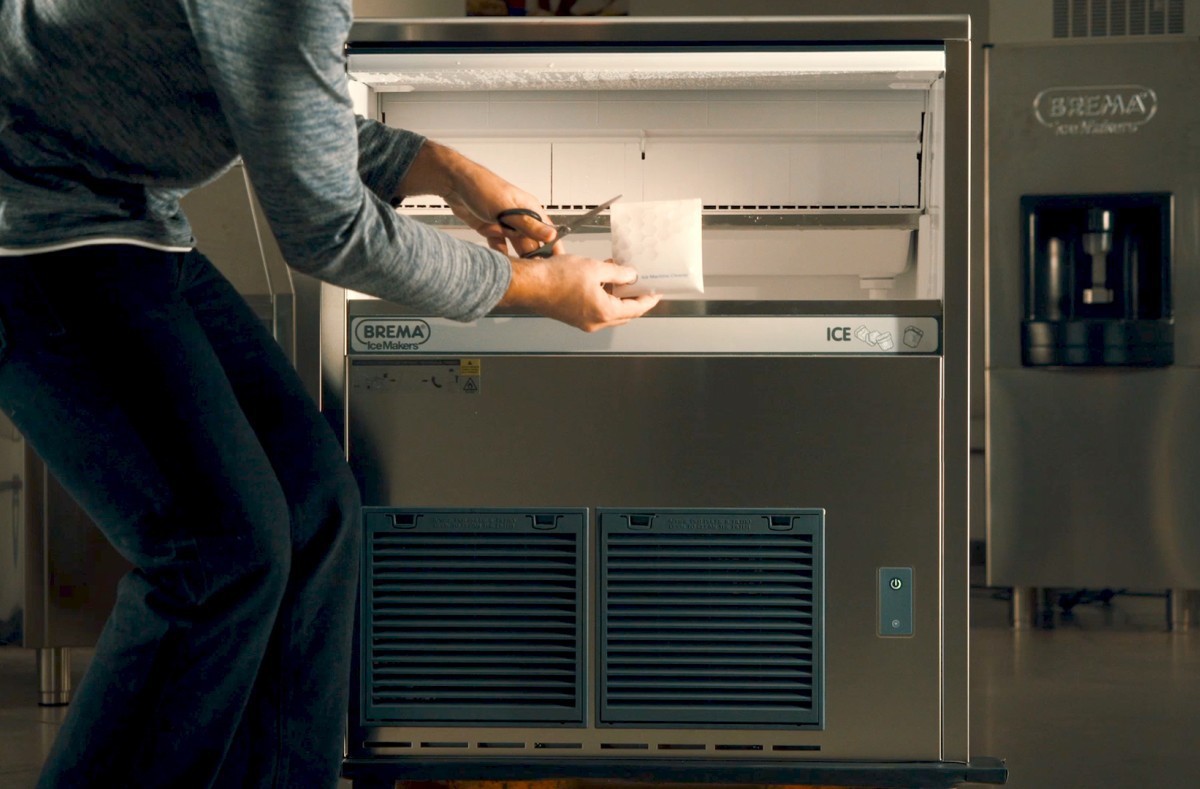
The history of ice: a journey through myths and legends
Ice is past, present and future. Memories of past times, embodied in its authenticity. Ice can preserve and conserve things, keeping them extremely clean, clear and vivid, as if they were still intact. Ice can present and show freshness. This is the true essence of ice.
Flashback
Imagine climbing into a time machine, putting your seat belt on, pressing a button and going back to past eras, at exponential speed. The history of ice is lost in the night of times. Some slabs dating back to 2000 BC with cuneiform writing confirm the existence of glaciers in the Euphrates region and today’s Iraq. In China, ancient wells dating back to 1000 BC were discovered, used to collect the ice cut from lakes and rivers, which stored during the winter, lasted until the following autumn. The Egyptians, pioneers of engineering and mathematical science, created intelligent systems for cooling food and even the Pharaohs, between one course and the next during their sumptuous banquettes, served primitive forms of granita. Cleopatra offered Caesar and Anthony fruit mixed with ice.
How much history there is in ice: it is a word charged with meaning. And our journey into the past doesn't end here. In the Old Testament, Isaac offered Abraham goat’s milk mixed with snow: this may well have been the first ice cream in history. In Roman times, Pliny the Elder wrote that during the aristocratic banquettes some people sipped snow, others ice, thus transforming the magic of the mountain into a dining pleasure. In Roman spas, ice kept the water cool in the frigidarium, the first examples of the beneficial and regenerating properties of today’s cryotherapy. And again … Seneca attributed medicinal virtues to ice, and the Emperor Hadrian, who suffered from fluid retention, applied ice packs to his chest to relieve the pain. Throughout ancient times, ice was used to stop bleeding, offer pain relief and lower the body temperature in the case of fever…
In Italy, in the 17th century on the Adriatic coast, glaciers were used to store fish, while in Milan, where there was no natural snow, ice was produced by flooding stretches of soil, leaving the water to freeze until it was thick enough to be broken into blocks, which were then transported. In Genoa, on the other hand, ice and snow were used to store the catches of fish.
In 1806 entrepreneur Frederic Tudor from New England began to export snow from the Boston mountains to the southern United States, the Caribbean and Cuba. Between 1830 and 1840, the advent of steam ships allowed the ice collected in North America to be transported to Europe, South America and even India and Australia. The ships were painted white to better reflect the sunlight, offering the charm of a natural remedy to the searing heat of the tropical climates.
The invention of the refrigerator and its gradual spread put an end to Tudor’s empire, but the tenacity and passion with which he defended and promoted his ideas became part of history, making him to all extents and purposes the “Ice King”.
In 1851 John Gorrie, physician and scientist from the Caribbean island of Nevis, patented the first ice making machine. In his notes, he wrote: “The highly compressed air is overheated by the energy of the compression. If this compressed air is made to circulate through water-cooled metal pipes, and if this air taken to the temperature of the water is expanded at atmospheric pressure, very low temperatures can be obtained. Low enough to freeze the water”.
Modern times
Nobody likes to drink a gin&tonic at room temperature! Today the association between ice and cocktails is pretty much taken for granted, indeed connoisseurs and experts even consider on to be the ingredient of choice for the other, not merely a way of cooling them. Apparently, it is something very simple: water chilled to below zero degrees, making it pass to the solid state. But not all ice is the same, and there are many traps: this is why there is a clear distinction between food-grade and non-food-grade ice.
Pathogenic agents can survive in ice, and are reconstituted and can multiply after melting. So, food-grade ice refers to ice made from drinking water, which, when melted, keeps the same microbiological and chemical-physical characteristics of the water used by food and beverage services to produce it, using special systems.
The problem is that very often the surfaces and filters of the ice making machine are not cleaned and maintained accurately or frequently enough. A change in tack is needed, a new cultural approach, to make everyone understand that ice is indeed a foodstuff: #ICEISFOOD.
Flashforward
Let’s begin with a curiosity. Have you ever heard of superionic ice? In 2020, a study carried out by the University of Colorado estimated that over 40,000 square kilometres of the moon’s surface (as large as Lombardy and Veneto put together) could capture water, in the form of this very special type of ice, with some extraordinary properties, in small, shaded cavities.
Contrary to normal ice, superionic ice is black and hot. A superionic ice cube would weigh four times more than a standard one. This is what the Laboratory for Laser Energetics in Brighton, New York State, has to say, having reproduced it in the laboratory using super-advanced technological simulations, confirming the existence of this superionic phase of ice. How? Easier said than done! One of the world’s most powerful lasers hit a drop of water, creating a shockwave that increased its pressure to a million atmospheres and its temperature to thousands of degrees. The X rays that propagated through the drop in the same fraction of a second offered humanity’s first glimpse of water in these extreme conditions. According to the researchers, superionic ice could be one of the most abundant forms of water in the universe.
And in the future of Brema? What is boiling - or rather freezing - in the pot? A technical ice that refreshes and helps nature. One of our main aims is to extend the HC version, with natural refrigerant R290, to the whole range of professional ice makers. In environmental terms, R290 is in an elite class of green alternatives to many of the most common refrigerants. This is a hydrocarbon present in nature and is a highly refined and purified propane fossil fuel.
And the trends of mixology rhyme with sustainability. Barmen are beginning to consider zero mileage in their choice of ingredients to mix with spirits, they are looking for equipment that pays attention to the environment and to the consumer health. So, the future of ice is looking greener!




